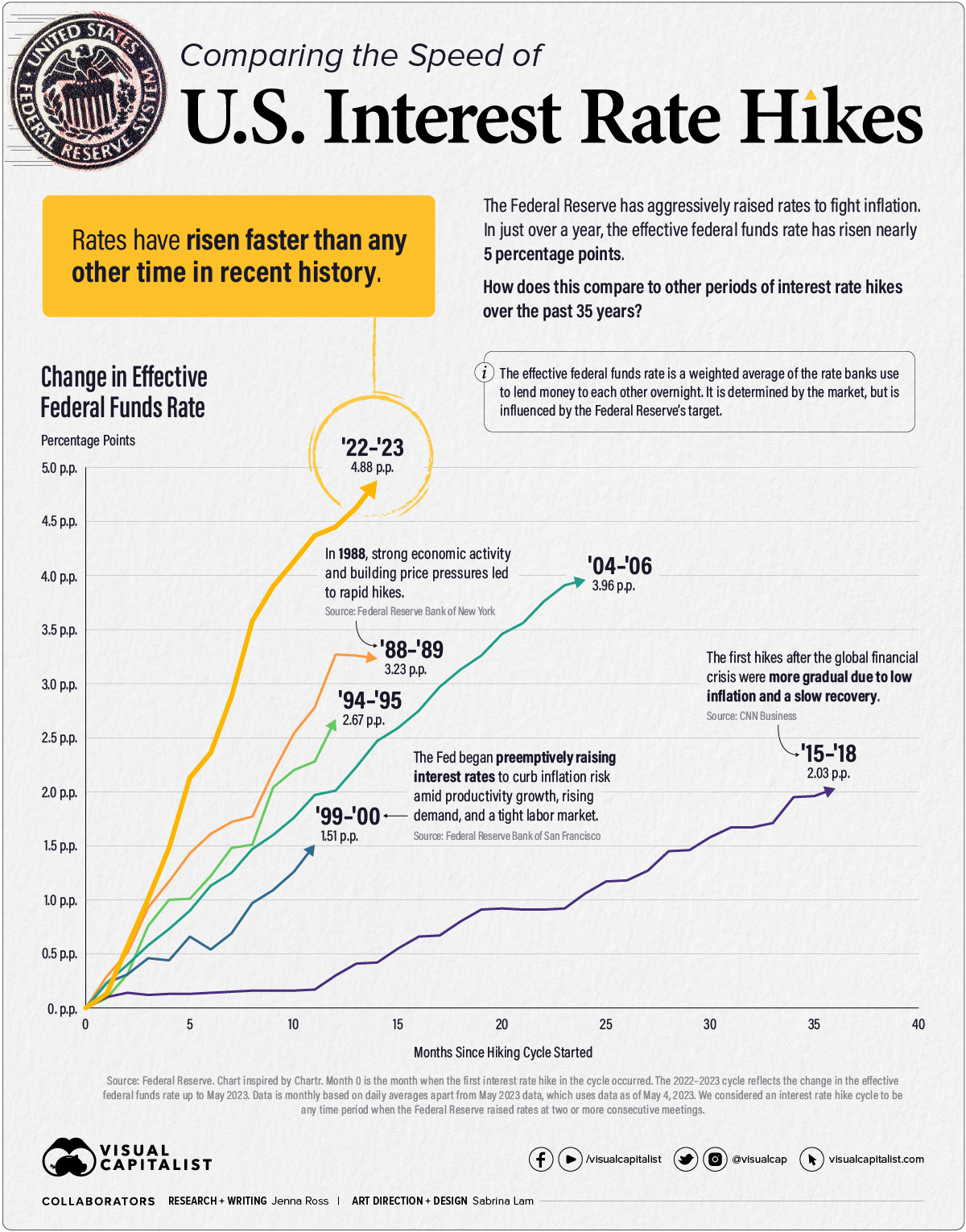Is the historic rate of Fed rate hikes a path to recession?

Comparison of the rate of increase in US interest rates
Since the last interest rate hike on May 3, U.S. interest rates have reached levels not seen since 2007. The Federal Reserve raised interest rates aggressively in an attempt to fight severe inflation. In fact, rates have risen by nearly five percentage points in just 14 months.
In this chart, we compare the speed and severity of the current rate hike with other periods of monetary tightening over the past 35 years.
Measuring periods of rising interest rates
We measured rate hike cycles using the effective federal funds rate (EFFR), which calculates a weighted average of the rates banks use to lend to each other overnight. It is determined by the market, but depends on the Fed's target range. We considered the starting point for each cycle to be EFFR during the month of the first rate increase.
Here is the length and severity of each cycle of interest rate hikes since 1988.
| A period of time | Duration (months) | Total change in EFFR (percentage points) |
|---|---|---|
| March 1988 - May 1989 | 14 | +3.23 |
| February 1994 - February 1995 | 12 | +2.67 |
| June 1999 - May 2000 | eleven | +1.51 |
| June 2004 - June 2006 | 24 | +3.96 |
| December 2015 - December 2018 | 36 | +2.03 |
| March 2022 - May 2023* | 14 | +4.88 |
End of cycle?
The Fed's slight quarter-point rate hike on May 3 was due to a number of factors. The following shows how some of the indicators have changed since the first increase in March 2022.
| March 2022 | March 2023 | |
|---|---|---|
| annual inflation | 6.8% | 4.2% |
| Annual increase in labor costs | 4.5% | 4.8% |
| Inflation-adjusted rise in labor costs | -3.7% | -0.2% |
| Annual GDP growth | 7.0% | 1.1% |
| Unemployment rate | 3.6% | 3.5% |
| Monthly Employment Change (revised after rate increase in parentheses) |
+414 000 |
+236 000 |
Source: Bureau of Labor Statistics, Bureau of Economic Analysis. Inflation is measured by the Personal Consumption Expenditure Index (PCE). GDP growth in March 2022 is for the fourth quarter of 2021, and this is the data the Fed would have had access to when making its first rate hike decision. Since then, employment has grown by 253,000 in April 2023.
Unemployment remains low and job growth remains positive. Labor costs in terms of wages and benefits continue to rise. However, they remained virtually unchanged when adjusted for inflation. Inflation is still above the Federal Reserve's 2% target, but it has slowed over the past year.
There are also reasons to be careful. Economic growth slowed significantly, and in March of this year the Federal Reserve predicted that a "moderate recession" would begin later in 2023. There is also concern about instability in the banking sector, as tighter credit conditions are likely to weigh on economic activity.
For now, it appears that the Fed may have put a hold on future rate hikes. His latest statement says he will "determine the extent to which further policy strengthening may be appropriate", rather than previous statements that suggested future increases.



















